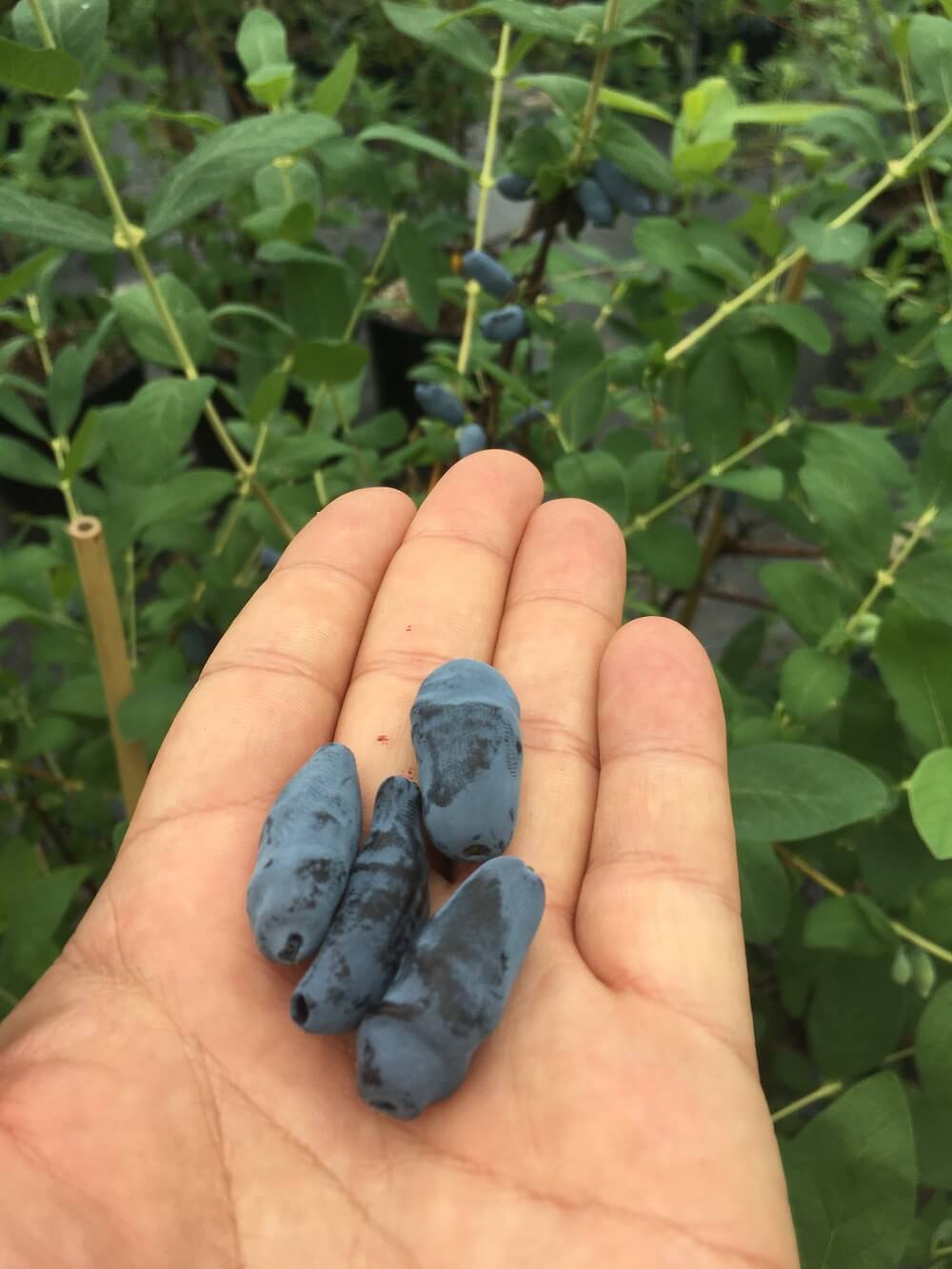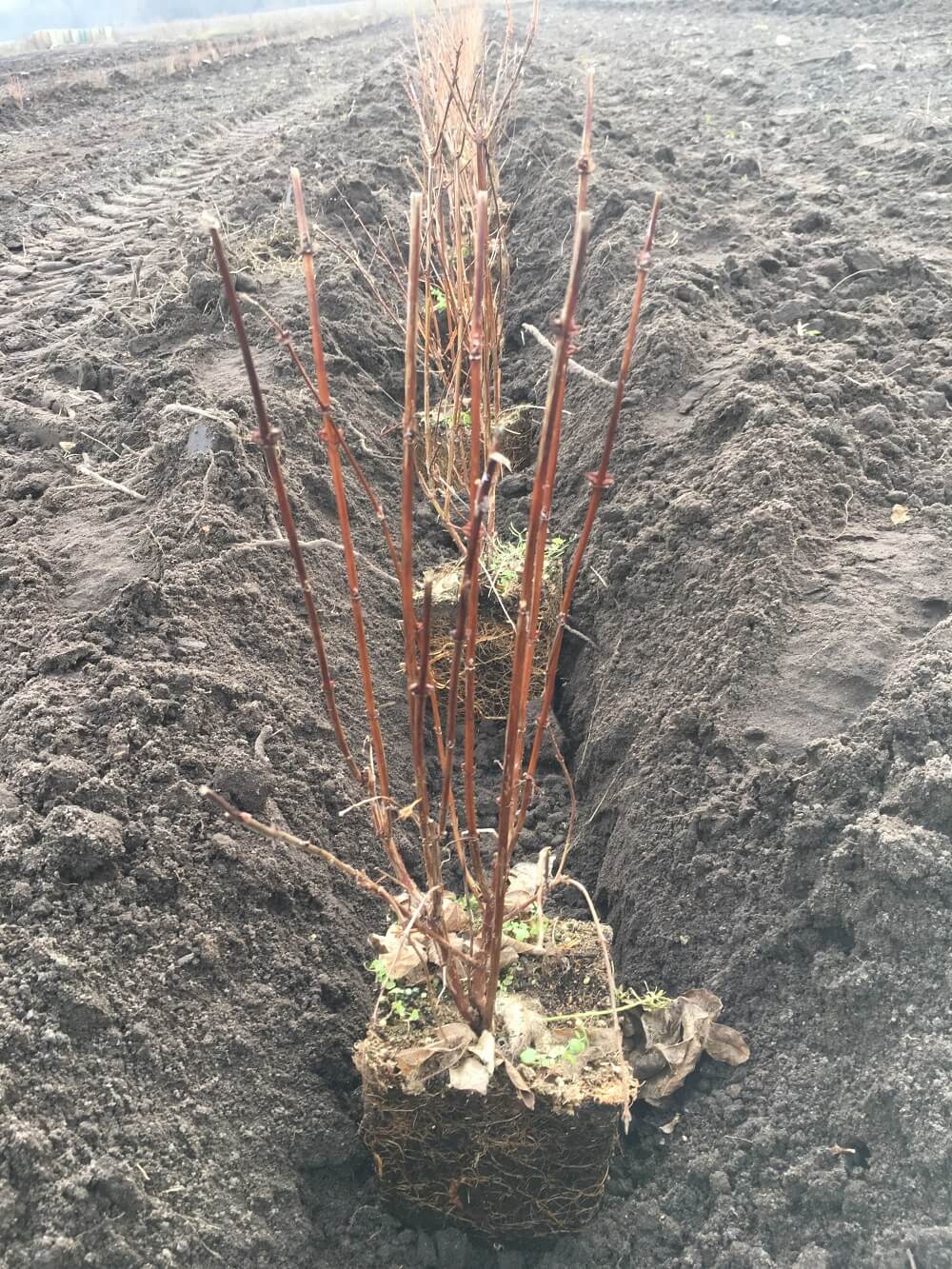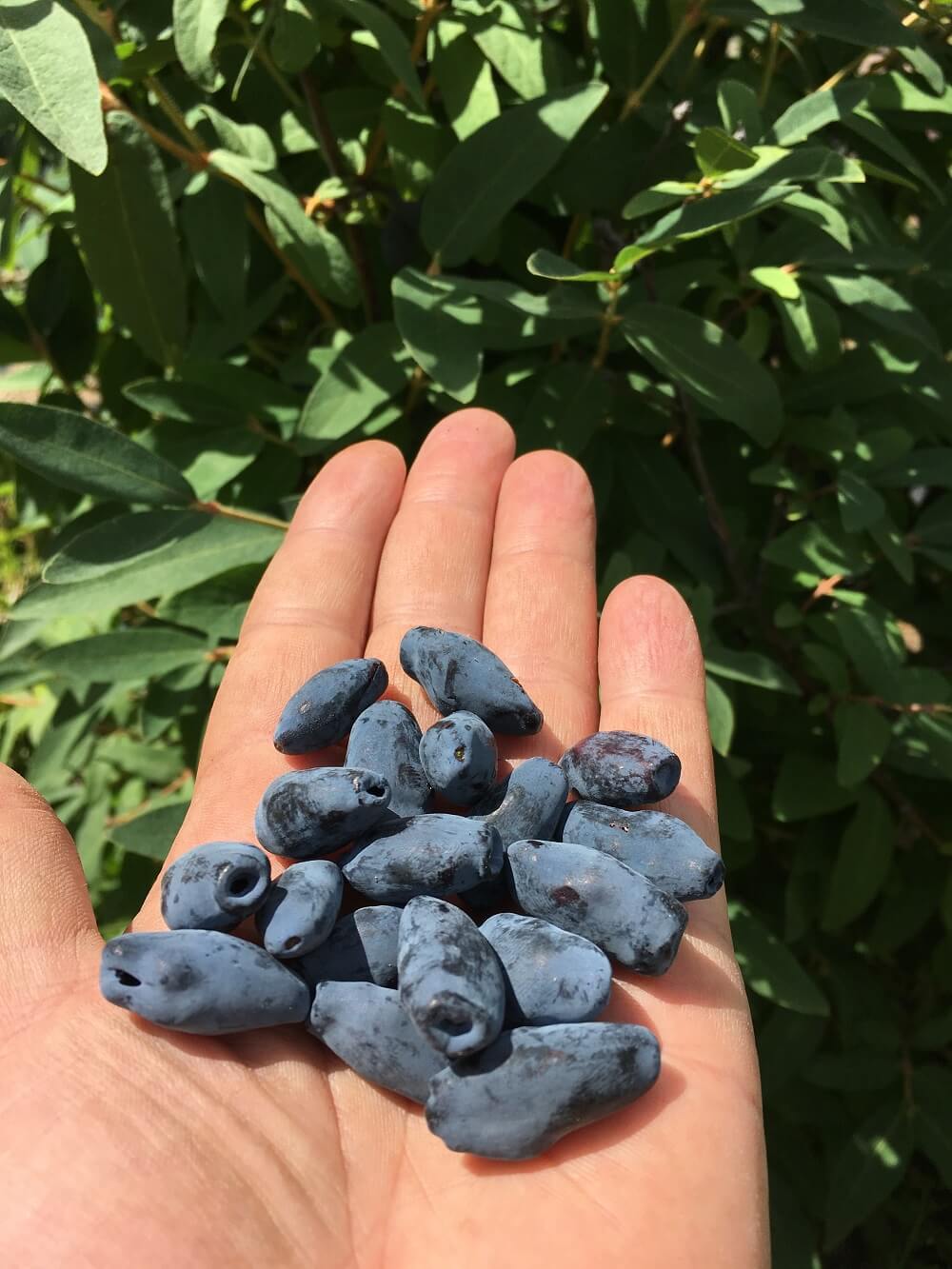At our orchard, we get a chance to produce the seedlings of the Haskap berry by using vegetative reproduction. This difficult method is only possible thanks to the modern gardening tunnels that we get to use, and that generates the best conditions possible for the plants. We get a chance to extract the rootstocks starting early spring, which is quite a help.
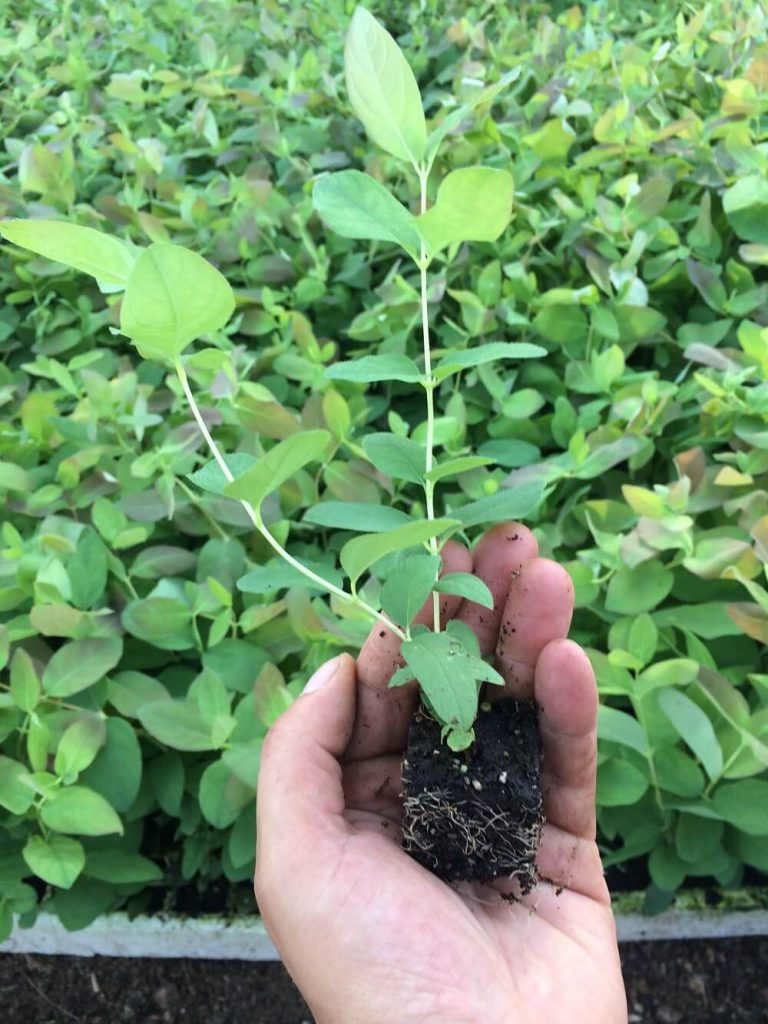

We offer annual plants in P9 plant pots, biennials in C1,5 plant pots and perennials in C3; however the most sought after are the annual plants. In case of each seedling, what is really crucial is that the root system is of high quality and well developed. Branching is jus as important; we get the results by clipping the seedlings during the production process. The final effect is a plant with an optimal rooting system and stems that are just high enough so that they are not cumbersome during the transportation.
The final price depends on the variety, the age of the plant and of course, the amount ordered. When ordering wholesale quantities, we are open to negotiation.
And donʼt worry: we will be with you at every stage along the way- from the moment we choose together just the right plant type for you to the moment of delivery. You can count on our professional advice- we have got your back!
Haskap berry varieties
| Name | Florescence | Harvest/Yielding | Frost-resistance | Disease-resistance | Variety/Type | Fruit |
| Aurora | average | high | high | high | for processing, for desserts | oval, elongated, very tasty |
| Honeybee | average | high | high | high | for processing, for desserts | very juicy, tart |
| Indigo Gem | average | very high | high | high | for processing, for desserts | relatively small, very sweet |
| Wojtek | early | very high | very high | rather high | for processing | large, sour- sweet, juicy, very tasty |
| Zojka | early | high | very high | high | for processing | large, oval or round, rather tasty |
1. Aurora
This Canadian variety was created by crossing the Russian Solovey with the Japanese MT46.55. It has been available for mass cultivation since 2002. Additionally, the reason why it is valued at plantations is the fact that it is a highly effective pollinator.
The Aurora shrub is tight and thick which is why the plant is quite impressive and decorative looking. The bush can grow up to 180 cm in height and 120 cm in width.
The stem grow upwards, the leaves are dark green, rather small, of an elliptic shape. The plants bloom in April and the fruit ripens fully in the second half of June. The plant needs a decent pollinator because without a cross pollination, fruiting will not be satisfactory. A good example of a pollinator for Aurora isanother Haskap berry: Honeybee. The fruit of that variety is elongated, oval, dark, very distinctive; machine picking is acceptable since the fruit grows evenly and is easy to spot. The fruit is very sweet and tasty. Unlike the majority of Haskap berry types, the Aurora fruit doesnʼt drop. It is great eaten fresh, as dessert or preserves: jams, jellies, etc.
2. Honeybee
Another licensed, Canadian type of the Haskap berry is a hybrid of Souvenir and Blue Pacific. It is characterized by a high harvest index and fast growth, which why this variety is especially valued at plantations goring fruit for mass production. The shrub can grow up to 150 cm in hight and 120 cm in width, the shape is spread. The perfect pollinator for Honeybee is Indigo Gem. On the other hand-Honeybee is an ideal pollinator for the Borealis berry type. The fruit tastes tart, slightly sour but is very juicy and distinctive in a positive sense. The shape is cylindrical, long, the color- purple, the peel is covered with ash- color, wax- like residue.
Machine picking is recommended which is always much more convenient; Honeybee is perfect for that since the fruit stem stays attached to the brach for a very long time- even when a beery has already dried up. The fruit is ripe and ready for harvest around the second half of June. One bush can bear up to 5 kg of fruit. The berries would perfect for juice production, jellies or even wine.
3. Indigo Gem
Another Canadian variety of the Haskap berry, but this one is relatively new. Indigo Gem is very high- yielding, its fruit is absolutely delicious which makes this variety one of the best to cultivate today- when it comes to both its utility and cultivation methods. Recently is has also been considered as one of the best when it comes to mass production. An Indigo Gem shrub grows up to 150 cm in height and 120 cm in width. The shape of the plant is rather loose, spread, the stems grow upwards. The plant blossoms very early- in April, the flowers however are impressively frost- resistant and can handle temperature as low as minus 8C. The best pollinator for Indigo Gem would be either Aurora or Honeybee. Indigo Gem berries are of a rather oval shape and dark purple color; they are very sweet, chewy- like, juicy and tasty. They are great both eaten fresh and processed. The fruit ripens and is ready for harvest in the second half of June; it can be picked mechanically or by hand. One bush can bear 5 kg of fruit.
4. Wojtek
This variety of the Haskap berry originates in Poland; it was created by Zofia and Hieronim Lukaszewicz. Wojtek berry is very temperature- resistant (even down to minus 45C!) and is able to withstand diseases that typically attack Haskap berry shrubs. The bush is of a round, tight shape and can grow up to 150 cm. This type will bear fruit already a year after it is planted. Traditionally, it blooms very early. A pollinator that is recommended for Wojtek is another popular variety: Zojka, or Duet. The fruit of the Wojtek type will be very large and very tasty; the blue peel features an ash- color, wax- like residue. Each berry can be almost 3 cm long which-comparing to other Haskap berries- makes them giants. Wojtek berries are ready to be harvested on the cusp of May and June. Hand picking is recommended but it can also be done mechanically. The fruit is excellent simply eaten fresh- its taste is so distinctive. But it will be just as good turned into preserves and desserts- both the traditional and more unconventional.
5. Zojka
Another Haskap berry that originates in Poland. The blooming and fruiting period happens a few days before Wojtek, another Polish variety. The shrub is highly frost- resistant and can withstand diseases typical for Haskap berries. The shrub is of a medium height, its shape is rather thick and round. It can grow up to 160 cm in height and 130 cm in width. The best pollinator for Zojka would be either Wojtek or Atut. The fruit of Zojka berry is round but slightly elongated so quite different, comparing to other Haskap berries. Zojka does feature the usual, typical wax- like residue, which is a tell tale sign of every Haskap berry. This variety bears fruit that is sweet, juicy and firm to the touch, but most of all- delicious. The berries stay attached to the shrub well, which is why both hand- and machine picking are acceptable. Zojka is relatively high- yielding: one bush could give you s on average 3,5 kg of fruit. The berries are best eaten fresh but are just as good processed or frozen. Unfortunately, Zojka does not deal well with transportation or prolonged storage. It will retain its shape and color for longer tough when cooked.
Morfologia jagody kamczackiej
Haskap berry is a shrub and belongs to the honeysuckle family; it can grow up to 200 cm. What is special about this plant is how long- living it is: it can live for up to thirty years. The shape of this plant is tight and round- like, the width does not exceed 150 cm. All varieties of the Haskap berry are highly frost-and drought-resistant.
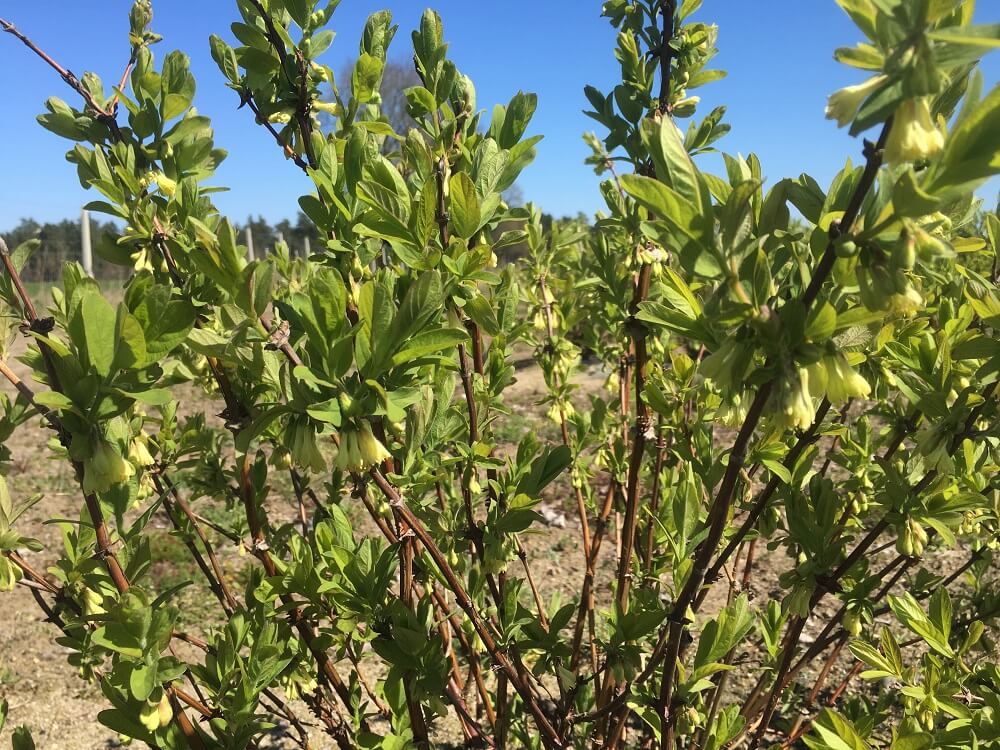
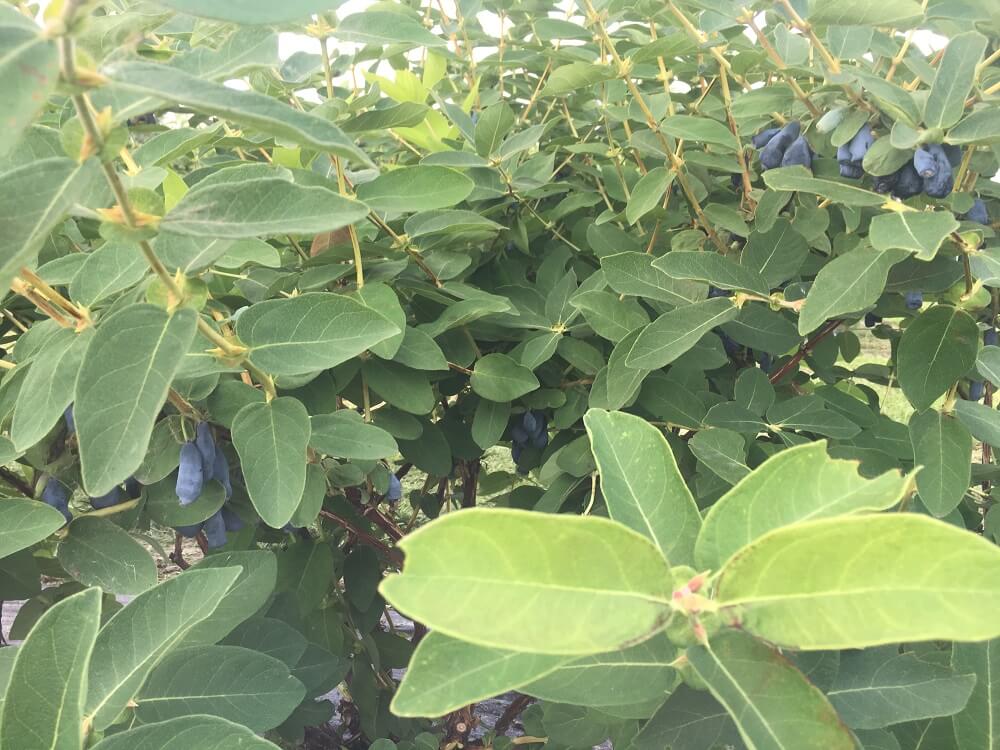
Another name for the Haskap berry is a blue honeysuckle. The stems of the plant are dark red to brown. The leaves are elliptic in shape, dark green or vivid green color, with a slightly fuzzy surface, and relatively large. The blooming period starts at the beginning of April. The flowers are medium in size, grow on short stems and can be 1,5 cm long; they are usually either light yellow or golden. The fruit of Haskap berry has a very distinctive shape, that is so much different from any other berry on the market and impossible not to recognize at a first glance. The shape is cylindric, the color either dark blue or ash purple, the taste- sweet, sometimes slightly tart, may resemble the taste of wild berries found in a forest. The berries are covered with a wax- like, grey residue which is perhaps the reason why they do not seem to be entirely purple but rather a combination of purple and grey. They are chewy in texture and very juicy. The berries are usually no longer than 3 cm and about 1 cm wide. Haskap berries should be picked starting mid- May because after about one week from the moment they are fully ripe, the peel might start coming off. The berries grow in small, loose clusters and ripen unevenly- which is precisely why the best method is hand picking. (Sometimes mechanical picking is recommended but only for certain varieties).
